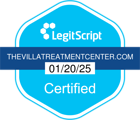People suffering from Xanax abuse number in the hundreds of thousands. Statistics show that the number of people visiting emergency rooms for Xanax abuse increased from 46,000 in 2004 to approximately 125,000 in 2010. Over 96,000 of these people had also mixed Xanax with another drug.
Xanax abuse affects far more than the individual’s body. It takes a toll on their mind, life and relationships.
Effects of Xanax Abuse
When Xanax is taken as prescribed, its short term effects are beneficial to users. It can reduce physical tension, relieve anxiety and restlessness. However, a user doesn’t have to take Xanax for a long time to begin experiencing some of its negative effects.
The negative effects of Xanax abuse have been described by many former users. They report being unable to string a proper sentence together, having a complete loss of memory of the time of their abuse as well as false memories. Some report short term memory problems even after getting sober.
Some immediate side effects of Xanax abuse are:
- Blurred or double vision
- Nausea and vomiting
- Lack of focus or confusion
- Lack of interest in sex
- Lack of coordination and tremors
- Headaches and migraines
- Stomach aches
- Fatigue
- Weight changes
- Constipation
- Depression
- Shortness of breath
- Unusual mood changes
Does Xanax work for everyone?
No, Xanax is not the right medication for everyone. It is highly addictive and as noted above, can trigger serious side effects. Because alprazolam is habit forming, it is not recommended for individuals who have a history of drug or alcohol abuse.
Recovering from Xanax Abuse
Individuals who are struggling with tolerance, dependence or addiction to Xanax are advised to seek professional treatment to safely recover from stopping use of the drug. It is not recommended to abruptly quit Xanax use, as that can lead to unpleasant and harmful withdrawal effects, including seizures. There are different options for treatment, depending on the level of dependence and length of addiction. Some options are:
Inpatient Treatment Programs
Such programs provide a stable and temptation free environment for recovery. The treatment centers have around the clock care and the medical staff can help individuals cope with withdrawal symptoms. Medical professionals may wean the individual from the drug slowly, by reducing the dose on a regular basis, rather than quitting cold turkey. Inpatient programs frequently include sessions on addiction education, individual or group therapy as well as relapse prevention techniques.
Outpatient Treatment Programs
These programs allow people to reside at their homes for the duration of the treatment. There are some typical variants on the types of outpatient programs. An individual could be part of a daily check in program, where they check in with a drug abuse counselor every day. Or they could be part of an intensive day treatment/partial hospitalization program, which require the individual to be at the center for a few hours a day, participating in therapy sessions and educational lectures.
Apart from the above, there are many community based 12 step programs which can also be successful in ending an individual’s addiction with Xanax.
Do you need help in determining what type of treatment program is right for you or a loved one? Call The Villa and we can guide you to the path of recovery.







